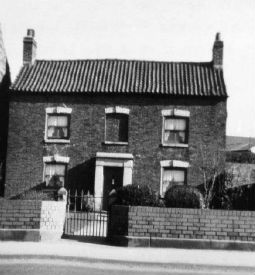
The first clues to the age of a house can be found by looking at the house itself and at the other buildings round about.
Books on the history of the area may tell you when the area developed or expanded. Background books on building styles and architectural methods may also help.
There are many useful sources available in Derbyshire local studies libraries, and elsewhere, to help you trace the history of your house.
Title deeds and wills
These are normally held by the current owner of the property, or on his or her behalf by a solicitor, bank or building society.
Deeds produced in this century should include building plans with the builder's name, and a ground plan showing the shape and extent of the house and the property boundary.
Earlier deeds are written in Latin rather than in English, and contain less detailed plans and builder information. Some deeds are held by the Derbyshire Record Office. They also hold copies of local wills dating from 1858 to 1928.
Wills made before 1858 are held at Staffordshire Record Office.
For those owners who are not Derbyshire natives, GOV.UK has information on wills after 1858.
A possible source of information, if the property has changed hands in the last 25 years or so, is the Land Registry. However, they charge a fee for searches of their records. The Nottingham office holds Derbyshire records.
Maps
Ordnance Survey maps at the scale 25 inches to 1 mile are very useful in establishing when houses appeared and showing changes to the ground plan over the years.
A complete set of first (from 1876), second (1898 to 1901) and third (1914 to 1920s) editions on microfilm, which covers the whole of Derbyshire, are held at Chesterfield and County Hall Local Studies libraries.
Tithe maps, which date mainly from around 1840, exist for most parishes in the county. Field names are given as well as owners and occupiers of land. Owners' names are on the 'awards' accompanying them. Chesterfield Local Studies Library holds some tithe maps and awards on microfilm. Other libraries have some local ones on CD. The originals are at Derbyshire Record Office.
Enclosure maps, around 1800, exist for some parishes. They are at Derbyshire Record Office.
Census
Census returns exist for every 10 years 1841 to 1911. But it is often impossible to identify a particular property with any certainty unless you know from other sources who was living in it at the time of the census.
Directories
Old trade and telephone directories can be very helpful.
Property sales catalogues
Chesterfield library and the Local Studies library in the Derbyshire Record Office both have collections of property sales catalogues. For larger properties, they may include plans. Smaller modern houses may have only a single page of description.
Electoral registers
Chesterfield Local Studies Library holds Burgess Lists and Electoral Registers for the Borough of Chesterfield from 1836, but Derbyshire Record Office holds the main collection for the county.
Early registers are alphabetical lists of property-owning residents, and may not give full addresses. Also bear in mind that house numbers, names and street names may change over time.
Photographs and engravings
The oldest photographs in library collections (Chesterfield and the Local Studies library in the Derbyshire Record Office) date back to the 1880s.
Engravings usually show individual buildings such as churches and country houses. Images can be seen at Picture the Past.
Taxation and rating records
Hearth tax returns for Derbyshire 1662 to 1670 have been printed, and show the names of residents in a particular parish. Land tax assessments for the period 1780 to 1832 are at Derbyshire Record Office.
Rating books, compiled for poor relief or for local authorities in the 19th century, give details of ownership and the rateable value of the property. Unfortunately, many rate records have been lost, and only a few have been passed on to Derbyshire Record Office.
Catalogues and indexes
A search of catalogues and indexes in the library may lead you to other, less obvious, useful items. Older properties may, for example, feature in village or town histories.
It is also advisable to contact the Derbyshire Record Office at Matlock, who hold estate papers, manorial records, and court rolls, which may take your search a step further.